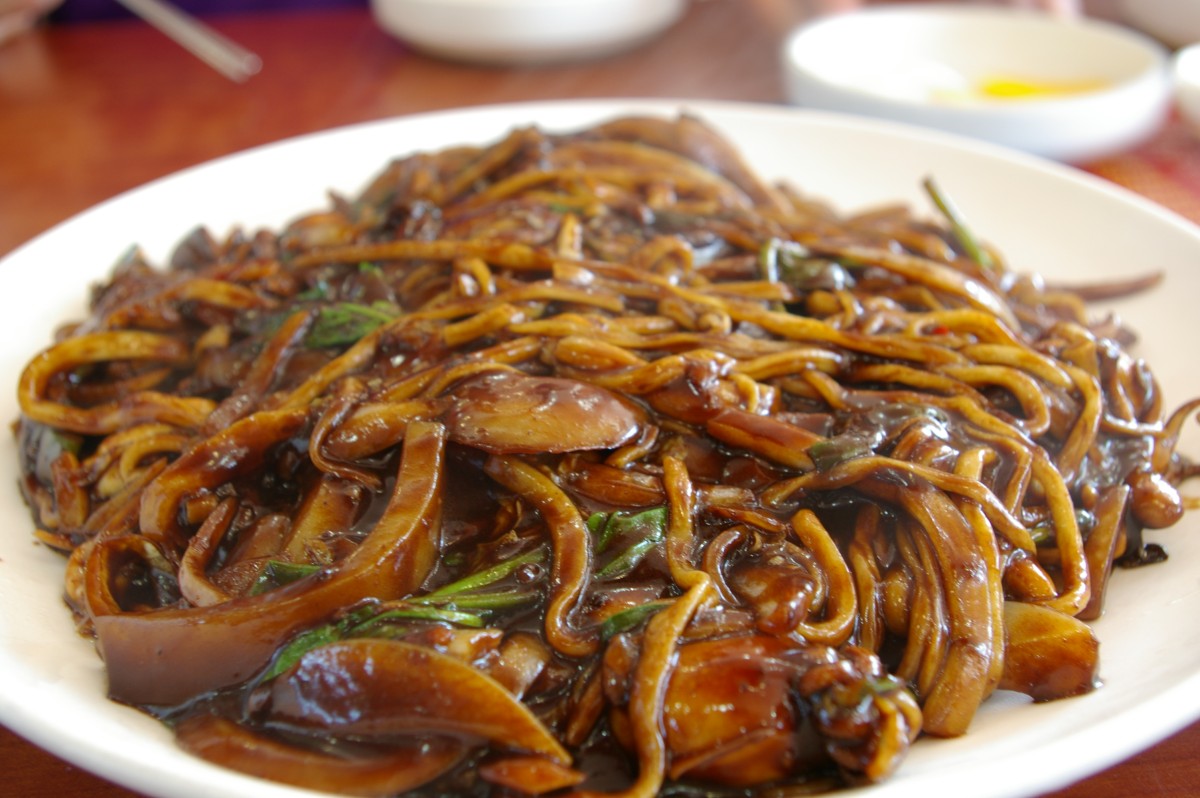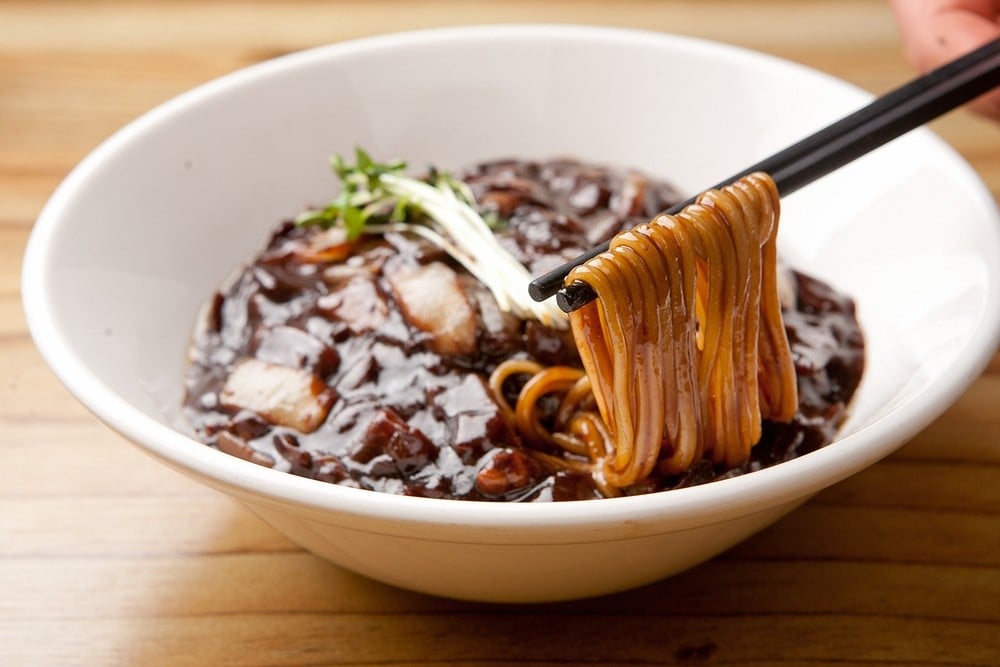If you like pasta, more precisely noodles, you should try jajangmyeon (자장면) or jjajangmyeon (짜장면), a noodle that appeared in China but has Korean adaptations. Thick chunjang sauce, diced pork, and vegetables are usually layered on top of pasta.
The dish originated in Incheon, South Korea, where Chinese workers began the process to make zhajiangmian, which is basically a stir-fried bean sauce, as early as the late 19th century. What differentiates the flavor in the Korean version is the darker and sweeter sauce. There are also people who prefer to use seafood or other types of meat. After all, cooking allows many adaptations according to each taste!

Índice de Conteúdo
history of jajangmyeon
Jajangmyeon arrived in Korea via migrants from Shandong Province, China. During this period there was competition between QingChina's last imperial dynasty) e japoneses. Mas o jajangmyeon só foi oferecido pela primeira vez em 1905 em um restaurante chinês em Incheon Chinatown chamado de Gonghwachun ( 공화춘 ;共和春). Atualmente, o restaurante não existe mais, porém se tornou o Museu Jajangmyeon.
The original sauce introduced by China is a light brown with a more salty taste. Later Korean chefs added caramel to sweeten it, in addition to using grains to make it darker.
Around the 1950s in South Korea, jajangmyeon was sold at a price well below the market so that more people could have access to it. The dish began to attract the attention of Incheon visitors and merchants, and the result was national popularity.
Name origin
Basically, in eastern culture, every name is accompanied by some history, especially with regard to food. Jajang (자장) is of Chinese origin zhájiàng (炸酱), which literally means “fried sauce” and Myeon (면) “noodles”.
Chinese characters are pronounced as jak ( 작 ;炸) and jang ( 장 ;醬) in Korean. However, the correct name is jajangmyeon , due to its origin which is not Sino-Korean, but is a conversion of the Chinese pronunciation. Despite this, most restaurants use the spelling: jjajangmyeon, due to the Chinese pronunciation zhá which sounds like jja instead of “ja” to Koreans.
As of August 22, 2011, the National Institute of Korean Language does not recognize the word jjajangmyeon as an accepted idiomatic transliteration.
Features
Para fazer o jajangmyeon é usado um macarrão mais grosso, com massa caseira ou puxado na máquina. Para essa massa usa-se farinha de trigo, sal, bicarbonato de sódio e água. Já o molho é feito com chunjang (pasta de soja) frita com molho de soja ou de ostra; carne ( de porco ou bovina); frutos do mar (lula ou camarão); cebolinha; gengibre e alho; legumes variados; caldo e pasta de amido.
The dish is commonly served with cucumber, spring onion, egg gun, boiled or fried egg, poached shrimp or fried bamboo shoot slices. It can also be used on top of ready-made jajangmyeon radish, raw onion and chunjang sauce (for dipping the onions).

Learn to do jajangmyeon
Recipe from https://www.receiteria.com.br/
Ingredients:
- 500 grams of udon noodles
- neutral oil
- 150 grams of jajang
- 400 grams of pork loin, cubed (it can be another soft pork cut or beef)
- 2 medium diced onions
- 1/4 cabbage cut into cubes
- 1 zucchini cut into cubes
- 1 teaspoon cornstarch dissolved in a little water
- 4 eggs
- 1 Japanese cucumber cut into thin strips
Preparation mode:
- In a pan, heat the oil and sauté the jajang, stirring constantly so that it does not burn.
- Remove from the pan and set aside.
- In the same pan, sauté the meat, onion and cabbage, stirring constantly.
- Return the paste to the pan, add water, reduce the heat, mix well, cover and let it cook until the ingredients are cooked.
- Add the zucchini and cook for another 2 to 3 minutes.
- Put the dissolved corn starch, mix and stir until thickened.
- Turn off the heat and set aside.
- In another large pot, boil a lot of water.
- Put the pasta and let it cook.
- If it foams too much, add 1/3 of a cup of cold water.
- When you reach the desired point, turn off the heat and drain the water.
- Assemble by placing the macaroni in a deep dish. On top of the sauce, a fried egg with a soft yolk and cucumber.
- Now it's just serving. Enjoy.
Did you already know this type of pasta? Feel like trying it out?





